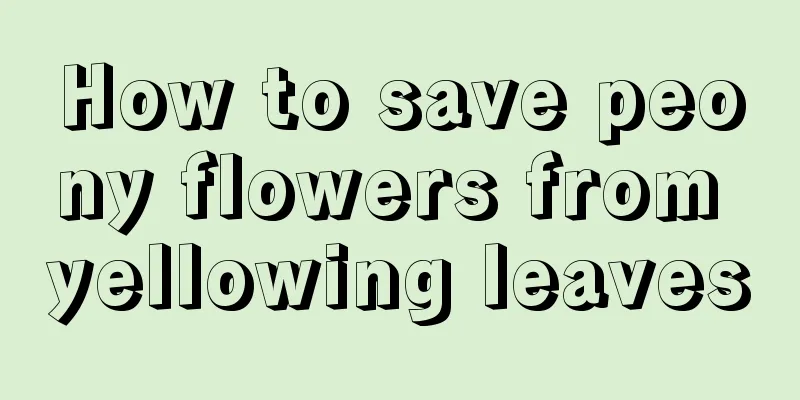How to save peony flowers from yellowing leaves

Reduce wateringIf you water too frequently or too much, the young leaves will turn yellow, but there will be no obvious changes on the old leaves. If you water too little, the plant will lack water and the old leaves will start to turn yellow from the bottom to the top. If the water shortage lasts for a long time, the leaves of the whole plant will turn dark yellow or even die. Solution: Water at the right time and in the right amount according to the condition of the potting soil. For smaller flowerpots, water them frequently, and for larger flowerpots, water them after the soil surface becomes dry. It is best to water thoroughly, and do not allow water to accumulate in the soil. Reasonable fertilizationIf too much fertilizer is applied or fertilization is applied too frequently, the leaf surface will grow well, the leaves will be thick and shiny, but the leaves will become uneven over time, and root rot may occur in severe cases. When the peony lacks nutrients or no fertilizer is applied for a long time, the young leaves and tender stems will turn yellow, gradually causing the whole plant to turn yellow or even die. Solution: Apply too much fertilizer and water in time. In serious cases, remove the plant from the pot and replace the soil. When there is a lack of fertilizer, do not apply concentrated fertilizer all at once, but supplement nutrients gradually. Prune rotten rootsPeonies have fleshy roots. If the potting soil is not suitable or the pot is not changed in time, bacterial infection will cause root rot. In the early stage, it is difficult to find any abnormalities in the above-ground part, but the absorption capacity of the roots gradually weakens, the lower leaves will slowly turn yellow, and gradually spread to the whole plant. Solution: Repot every year, check the root growth, and prune the roots in time. Be careful when watering to avoid waterlogging and root rot. Preventing pests and diseasesPeonies are often harmed by underground pests and nematodes such as white grubs and mole crickets, causing the leaves to lose their green color and turn earthy yellow, or even become dry and scorched. The main symptom of this condition is that the leaves of a single or several plants in a certain place turn yellow and burnt. Solution: When symptoms appear, use pesticides to irrigate the roots promptly, or remove the plant from the pot, disinfect it, and replace it with new soil. |
<<: Why are the leaves of the five-color plum turning yellow?
>>: What to do if the leaves of morning glory turn yellow
Recommend
How to plant Zephyranthes seeds
1. Sowing time The sowing time is determined by t...
What are the breeding methods and precautions for birds of paradise
Bird of Paradise Breeding Method Bird of paradise...
Cultivation methods and precautions of imported lotus lanterns How to cultivate lotus lanterns
Imported chrysanthemums are actually very easy to...
Don’t buy fertilizers anymore. If you use these kitchen wastes to grow flowers, they will grow wildly and you can’t control them!
How to make your own enzyme flower fertilizer? st...
What are the varieties of orchids? How many varieties of orchids are there?
1. Basic Introduction Orchids are epiphytic or te...
How to propagate cypress by cuttings and sowing
Cypress reproduction method The common methods of...
How to prune red sandalwood
When to prune rosewood Red sandalwood bonsai is g...
Things picked up from the trash can can be used to grow flowers for 10 years without root rot
Clivia Nutshell The leftover melon seed shells, p...
How to store cut pumpkin? Can it be put in the refrigerator?
Pumpkin is a common food in people's daily li...
How much is the yield of hybrid rice per mu? Analysis of the current yield of hybrid rice per mu
Hybrid rice yield per mu Under normal circumstanc...
Management methods and measures for wheat during wintering
When the temperature drops below 2°C, wheat will ...
Do these radiation-proof plants really work? I was shocked by the truth!
Cactus or prickly pear Cactus or prickly pear is ...
Can yew be planted in the yard?
Can yew be planted in the yard? Yew trees can be ...
Cultivation methods and precautions of Pagoda Flower Sphagnum
1. Soil The requirements of the substrate used fo...
How to cultivate red nanmu
Growth conditions of red macaw For red nanmu, the...









